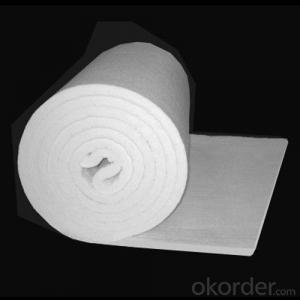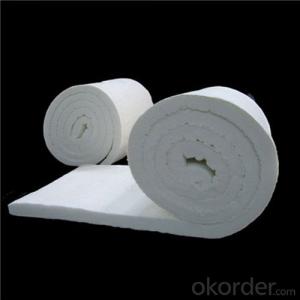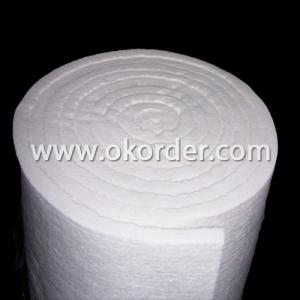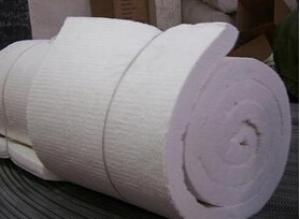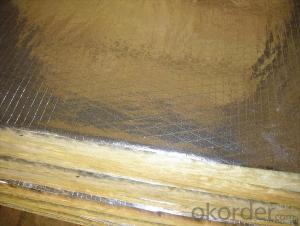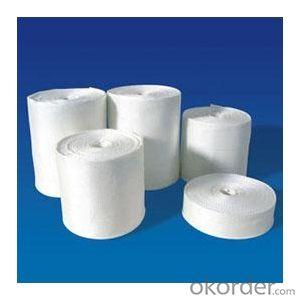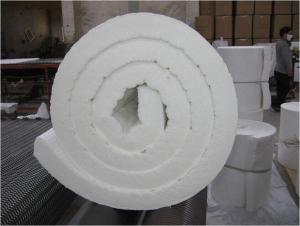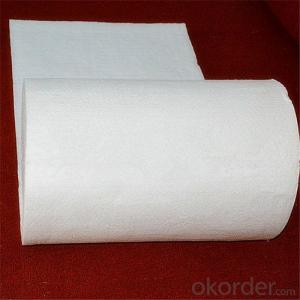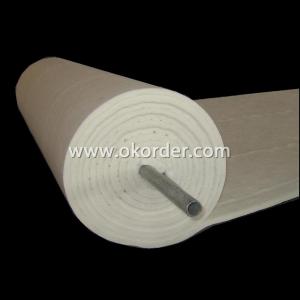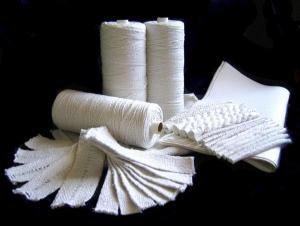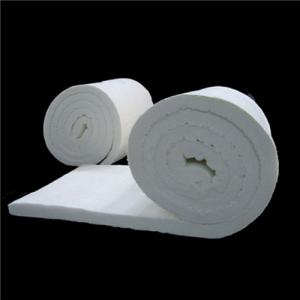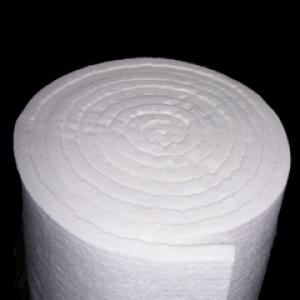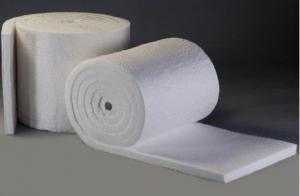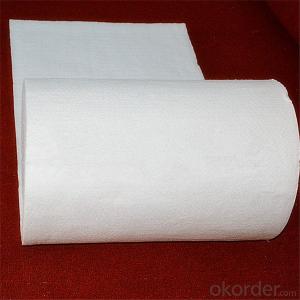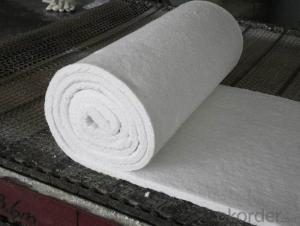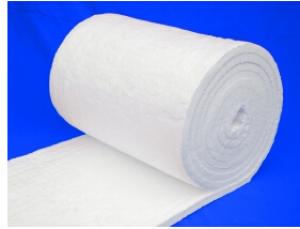HZ Grade Ceramic Fiber Blanket 2600°F (1430°C)
- Loading Port:
- Qingdao
- Payment Terms:
- TT OR LC
- Min Order Qty:
- 200 kg
- Supply Capability:
- 5000000 kg/month
OKorder Service Pledge
OKorder Financial Service
You Might Also Like
General Information of Ceramic Fiber Blanket
CMAX ceramic fiber blanket is made from high quality Gao-Ling clay, high purity alumina and silica oxides by spun or blown process.
It is asbestos free. Double-side needling provides ceramic fiber blanket with great tensile or handing strength for easy installation.
Ceramic fiber blanket are classified as STD, HP, HA, and HZ respectively corresponding to different maximum service temperature 1000℃, 1100℃, 1200℃ and 1350℃
Feature of Ceramic Fiber Blanket
Heat resistance
Light weight
Low thermal conductivity
Low heat storage
Resilient to thermal shock
High tensile strength
Application of Ceramic Fiber Blanket
Petrochemical process heater refractory fiber lining
Heat treating furnace or Intermittent (shuttle) kiln hot face lining
General furnace backup insulation
Heat seals for kiln car or furnace door
Electrical insulator
Image of Ceramic Fiber Blanket
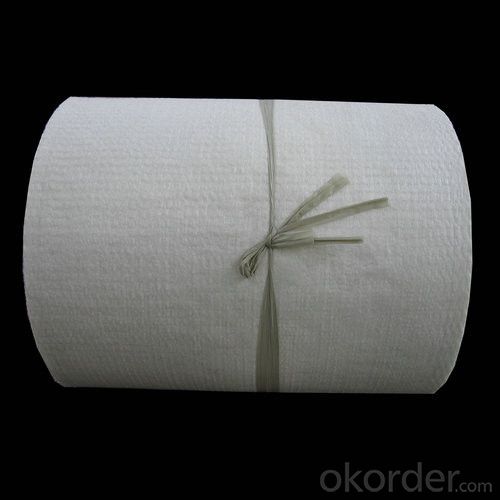


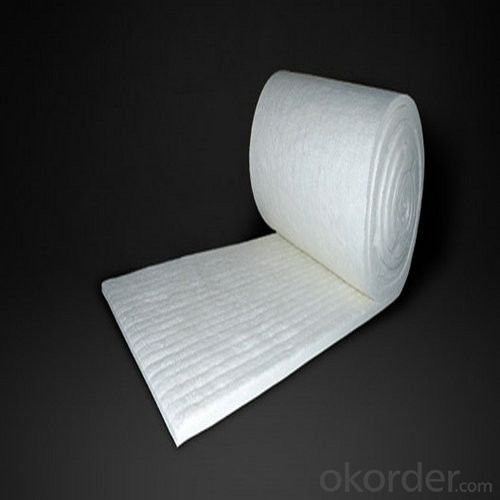
Technical Data of Ceramic Fiber Blanket
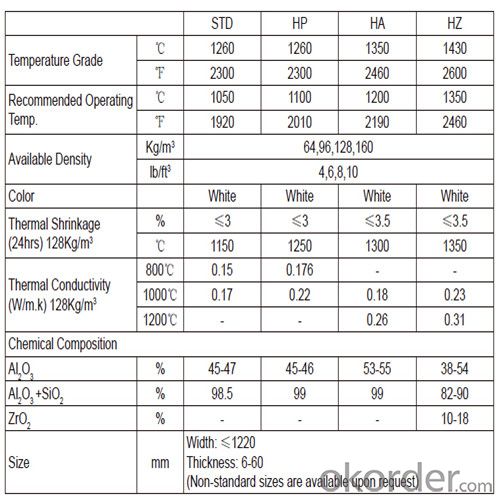
Who We Are
OKorder is offering high quality Ceramic Fiber Blanket at great prices with worldwide shipping. Our supplier is a world-class manufacturer of ceramic fiber products, with our products utilized the world over. OKorder annually supplies a full range of products to European, North American and Asian markets. We provide quotations within 24 hours of receiving an inquiry and guarantee competitive prices.
Why Choose Us
We are a government owned company with ISO certificate.
We are listed in Global Fortune 500 with D & B report.
We have more than 11 refractory production facilities and bases across China. We have a wide products range, such as ceramic fiber products (ceramic fiber blanket, module, board, paper, bulk), ceramic fiber textile (ceramic fiber rope, cloth, tape, yarn) etc, refractory brick (fireclay brick, high alumina brick, silica brick, magnesia brick etc), monolithic refractory materials, insulating fire brick, calcium silicate board, mica sheet, steel fiber. You can find various products here, and we can combine the light weight ceramic fiber products with the heavy weight refractory brick in one container delivery, then save the sea freight for you.
We have strict materials selecting system and quality control system. We have the ability to take responsibility for your orders and product quality.
FAQ
Q1: Why buy Materials & Equipment from OKorder.com?
A1: All products offered by OKorder.com are carefully selected from China's most reliable manufacturing enterprises. Through its ISO certifications, OKorder.com adheres to the highest standards and a commitment to supply chain safety and customer satisfaction.
Q2: How do we guarantee the quality of our products?
A2: We have established an advanced quality management system which conducts strict quality tests at every step, from raw materials to the final product. At the same time, we provide extensive follow-up service assurances as required.
Q3: What other products does OKorder offer?
A3: We offer a full range of refractory bricks, monolithic material, ceramic fiber products, and more.
Q4: If I need your offer, what information do you need?
A4: In order to choose suitable products, it will be appreciated to provide us the information, such us specification, technical data, order quantity, products application etc.
If any question, please contact us freely.
- Q:I want to get a chicken coop and im going through the list of materials in my head, which is very hardIs insulation a must? I hear that it keeps the coop 5-10 degrees cooler in the summer and 10-20 degrees hotter in the winter.is this true? Adn i also heard that insulation also acts as a sound proofDoes it really mute the sound in the coop? Also if i get insulation do i need a heat lamp? Im desperate! Thanks
- Hi! You've made no mention of what sort of climate you live in which does make it a bit more difficult to answer the questionIf you are in a fairly temperate climate with no temperature extremes then you can probably get away without any insulation at all providing the birds are well sheltered from the elementsHowever if you are in a climate which is prone to quick changes of weather or snowfall than some degree of insulation can be a good idea- 6 mil polyethylene foam works well but it does add extra work as then you need to double wall the coop to make sure the chickens don't peck at it (place a vapor barrier alongside the inside wall as well)(Don't forget to provide adequate ventilation as well) If the walls and ceiling are well insulated this way then there is probably no need for a heat lamp other than for raising chicks however if you are in an area where there is a LOT of continuous snowfall or extended levels of cold (where you need to break ice off of water everyday) you should have one on handInsulation will mute the sounds from the coop a little simply because the walls are thicker and the sound has further to travelYou'll find that if you are just keeping hens that most breeds are fairly quiet anyway and just have noisy moments like when they are laying or when they are frightened.
- Q:i see my abuser fridayits all mental abuse too.this person teels me that im noting.its this persons way or no way,even when i do it there way its still wronghow do i cope with this? why cant i stand up to this person? can you please help me?
- I don't think you can just insulate without putting in a vapor barrier and roof ventilation because frost and thaw cycles will occur and soak the underside of the roof and drip down on the insulation etc.
- Q:What is a zephyr?
- Haha, I used to think at the movies they inserted huge videotapes under the screen to play the movies.
- Q:For example,Solar Energy gives electricity and heatIt powers swimming pools, homes, and other buildingsSolar energy is collected with solar panels and solar thermal boxes.ALSO Does anyone know how it works?Thanks!
- yes they definatly have the seal
- Q:woven fabric ,adft
- amino acids, glucose and fats are all converted from one form of energy to another and finally released as heat one of the basic laws of physics is the conversation of energy which states that energy can not be destroyed or created it can only change forms.
- Q:Polymer fibers and filaments are used in several applications: what is the most important application commercially?Technically, what is the difference between a fiber and a filament?Among the synthetic fiber materials, which are the most important?
- Making an exhaust gasket from layers of aluminum can work but making it from copper flashing would likely work betterI worked in the aerospace industry and actually made gaskets for some applications out of GoldI wish I had gold sheet available to make exhaust gaskets for my daily driver, the exhaust would not leak and the gasket would never fail, but would cost several times what my truck is worth (and even what it cost new 30 years ago)
- Q:In our science class we are seeing what would make the best insulation for a baby bottleWe pour hot water into a baby bottle and then put stuff around it to try and keep all the heat in.any ideas for what to use?? It can be anything???
- Insulating materials Most insulation is used to prevent the conduction of heatIn some cases radiation is a factorA good insulator is obviously a poor conductorLess dense materials are better insulatorsThe denser the material, the closer its atoms are togetherThat means the transfer of energy of one atom to the next is more effectiveThus, gases insulate better than liquids, which in turn insulate better than solidsAn interesting fact is that poor conductors of electricity are also poor heat conductorsWood is a much better insulator than copperThe reason is that metals that conduct electricity allow free electrons to roam through the materialThis enhances the transfer of energy from one area to another in the metalWithout this ability, the material-like wood-does not conduct heat wellSo, there is the answerIf you are looking for anything solid as an insulator then something that is less dense and with minimal electric condictivity should do.
- Q:I would like to begin knitting for a relaxing hobbieWhat is the best circular needle size to start with? Which brand of yarn would you suggest? Fiber content? What is a good beginning project/pattern?
- To be honest 4 Standards that live in a kitchen is a bit well, cruelThey are probably bored and under-stimulated and so of course they want out! These dogs need lots of exercise and mental stimulation-training, agility, tricks, etcIf you aren't keeping them stimulated they will do anything to get out and not be relaxed behind a gate in a kitchenThe short answer: get a crate and crate the jumperTraining a dog not to do something when you aren't' home is not really easy without the use of aversives, not something I recommend.
- Q:I mean, a nonexpensive wayAnd dont say knitting or crocheting, i mean real fabric cloth like on a T-shirt.
- Madder than a sane person being attacked by psyciatrists a the Betsi Cadweladr unviversity health board, North Wales, UK
- Q:I am only interested in what happens when the fibres actually come togetherNone of the web sources make any sense, are too vague in their descriptions so far (Wiki, Youtube videosall rubbish so far)I want to understand this though: Fibres get fed into the open-end spinning machine through one entrance, where they get picked up by a rotating arm, and that then doeswhat, actually? Wraps it around a cylinder? And then, what next?
- No, you got it sort of wrongThe spinning arm only rotates the strand that is forming - the yarnIt is the twist that compresses the fibres together, which then create a lot of friction, and they don't slide past each other but hang on tight to each other, and that keeps it all together making a long strand out of short fibresWith wool, which has short little barbs on the outside surface, they grab onto each other and hold tightRubbing wool fibres together matts them and makes feltOther fibres, like cotton, are very smooth, so you need to put a lot of twist (I mean, a whole lot of twist!) to make them hold together(I'm spinning cotton now, and have to remember to put in a lot more twist than I think is possible) It's the twist that pushes the fibres tight up against each other, and it is the friction that keeps them togetherTo break any yarn, just untwist them.
1. Manufacturer Overview |
|
|---|---|
| Location | |
| Year Established | |
| Annual Output Value | |
| Main Markets | |
| Company Certifications | |
2. Manufacturer Certificates |
|
|---|---|
| a) Certification Name | |
| Range | |
| Reference | |
| Validity Period | |
3. Manufacturer Capability |
|
|---|---|
| a)Trade Capacity | |
| Nearest Port | |
| Export Percentage | |
| No.of Employees in Trade Department | |
| Language Spoken: | |
| b)Factory Information | |
| Factory Size: | |
| No. of Production Lines | |
| Contract Manufacturing | |
| Product Price Range | |
Send your message to us
HZ Grade Ceramic Fiber Blanket 2600°F (1430°C)
- Loading Port:
- Qingdao
- Payment Terms:
- TT OR LC
- Min Order Qty:
- 200 kg
- Supply Capability:
- 5000000 kg/month
OKorder Service Pledge
OKorder Financial Service
Similar products
New products
Hot products
Hot Searches
Related keywords
